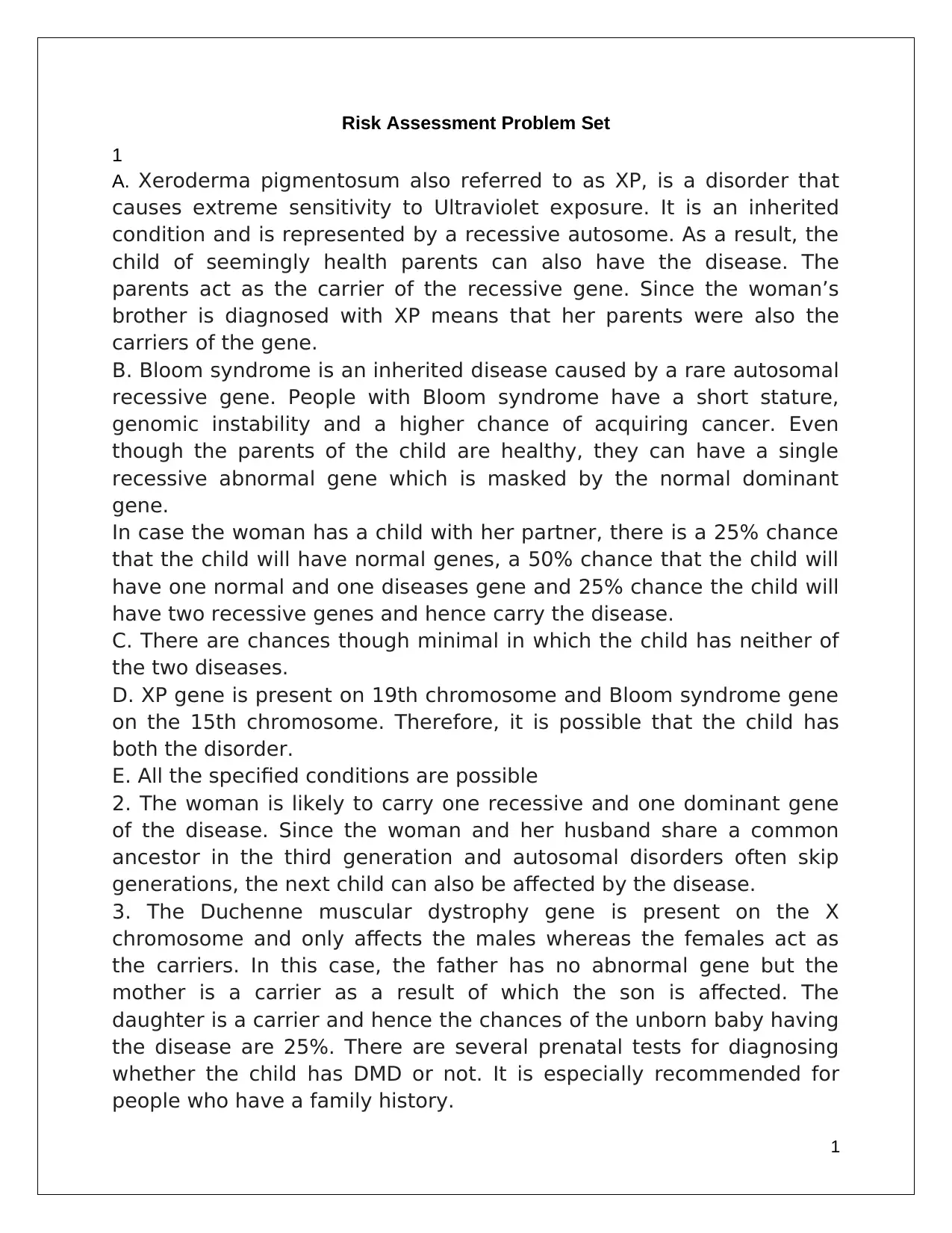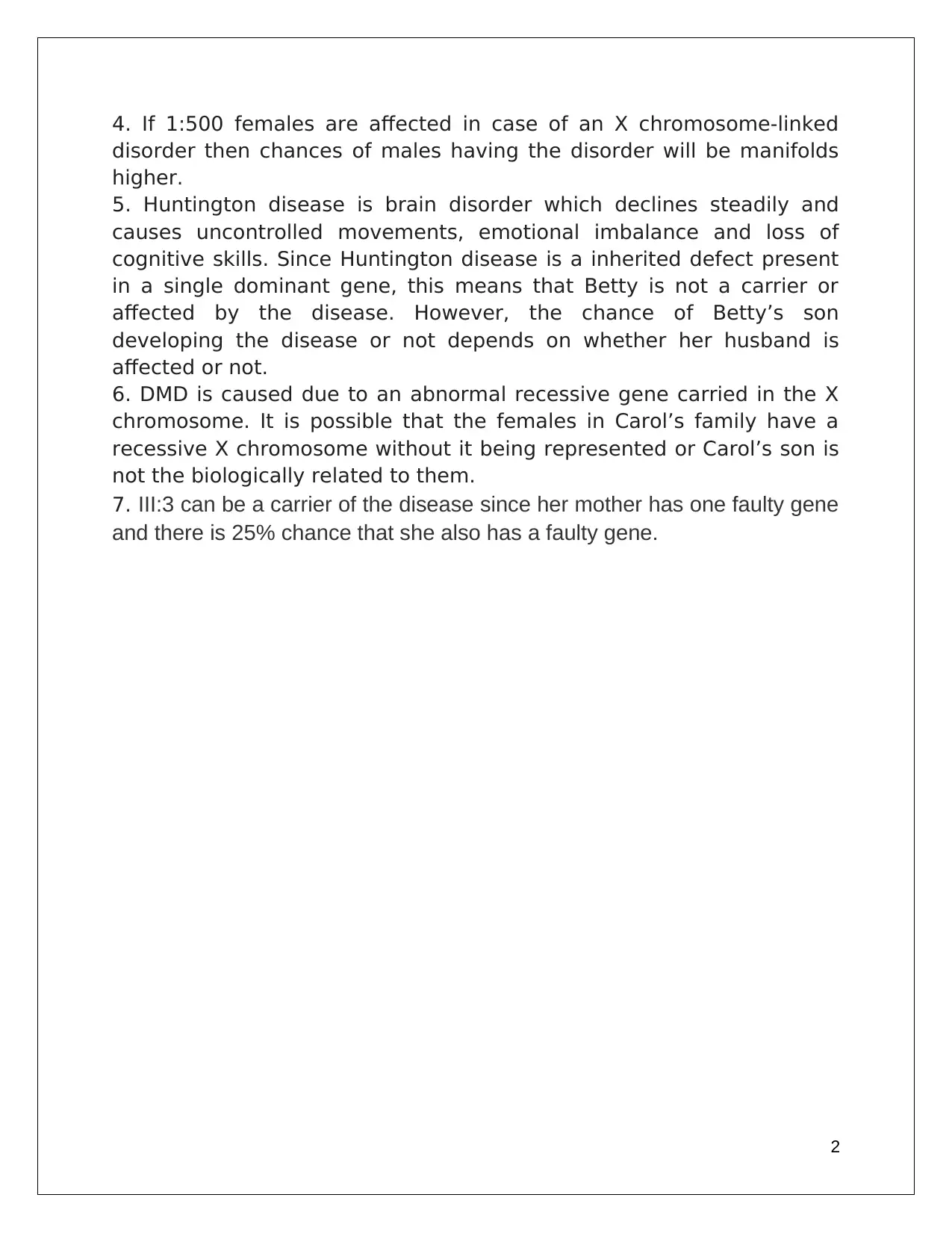University Biology: Risk Assessment Problem Set 1 - Genetics
VerifiedAdded on 2022/12/27
|2
|591
|20
Homework Assignment
AI Summary
This assignment provides solutions to a risk assessment problem set focusing on genetic disorders. The problems cover various scenarios, including the risk of offspring inheriting xeroderma pigmentosum (XP) and Bloom syndrome, both autosomal recessive conditions. The solutions detail the probabilities of offspring inheriting these conditions, along with the scenarios involving Tay-Sachs disease, Duchenne muscular dystrophy (DMD), Huntington disease, and X-linked disorders. The assignment explains the inheritance patterns, carrier status, and the implications of consanguinity. It also discusses the incidence of X-linked disorders in males versus females and provides insights into prenatal testing and family history in assessing genetic risks. Overall, the solutions offer a comprehensive understanding of genetic risk assessment in different scenarios.
1 out of 2








![[object Object]](/_next/static/media/star-bottom.7253800d.svg)